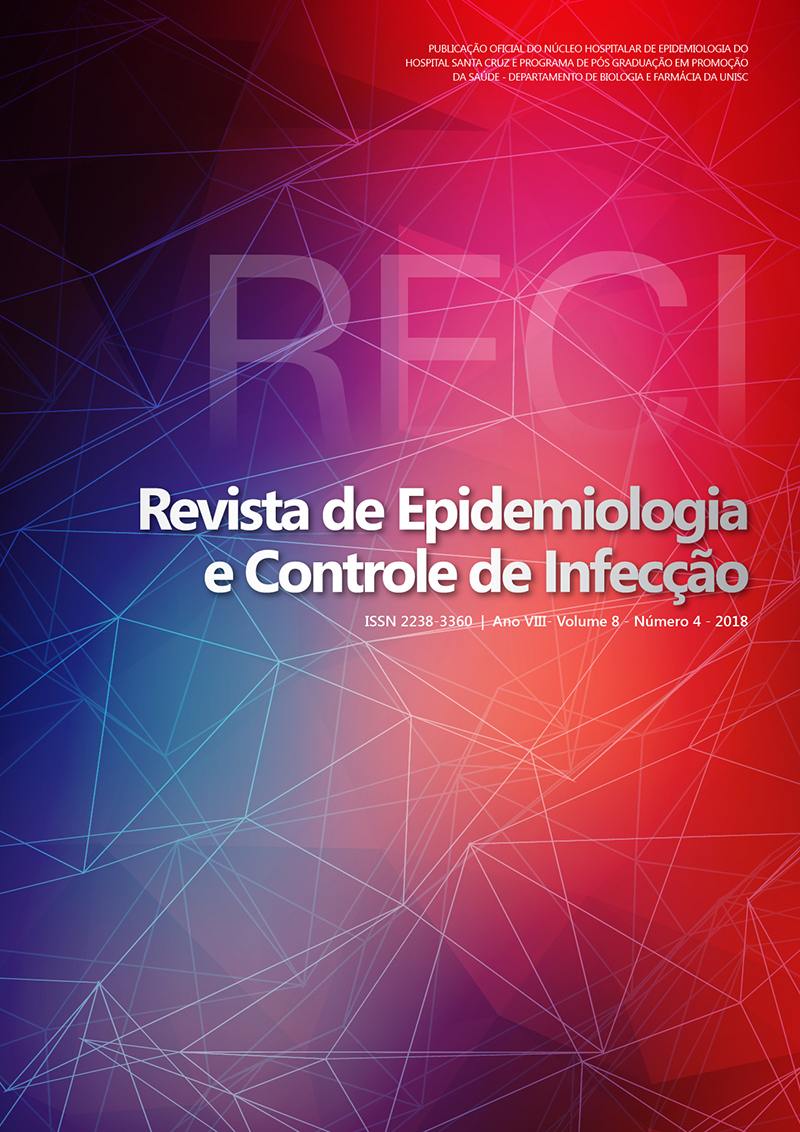Late-onset sepsis in a Neonatal Intensive Care Unit
DOI:
https://doi.org/10.17058/reci.v8i4.11581Abstract
Background and Objectives: It is essential recognize the microorganisms present in hemoculture in pediatric patients internees for a better choice of antibiotic therapy. In this way, this work aims assess the association between clinical and epidemiological parameters with the onset of late neonatal sepsis in hospitalized patients, in a pediatric service of the south of Brazil. Methods: A cross-sectional, descriptive, retrospective, qualitative and quantitative study that used secondary data from the files of patients which presented clinical criteria indicating neonatal sepsis, that were hospitalized in the Neonatal Intensive Care Unit (NICU) at Hospital Santa Cruz. Results: Out of the 588 patients hospitalized in the NICU from 01/01/2013 to 12/31/2015, 123 newborns (NBs) filled the criteria for late neonatal sepsis. Out of these, 59 (47,97%) presented with positive hemoculture, which was more frequent in preterms NBs (39,84%) and low birth weight (43,90%), although there was no statistically significant associantion between these factors and positive hemoculture. From the possible risk factors for the onset of neonatal sepsis, mechanical ventilation (p=0,005), having performed surgery (p=0,019) and in-hospital stay longer than a month (p=0,001) showed statistic association with positive hemoculture. The microrganisms that were the most frequent were the coagulasenegative staphylococci (S. epidermidis, S. saprophyticu and S. haemolyticus), found in 37,71% of the analyzed hemocultures. Conclusion: This study showed higher prevalence of neonatal sepsis on premature NBs and on low-weight NBs that required higher care and suffered invasive procedures during the stay in the NICU. Invasive procedures and long hospital stay were significantly associated with positive hemoculture, corroborating with tah described in the literature.Downloads
Downloads
Published
How to Cite
Issue
Section
License
The author must state that the paper is original (has not been published previously), not infringing any copyright or other ownership right involving third parties. Once the paper is submitted, the Journal reserves the right to make normative changes, such as spelling and grammar, in order to maintain the language standard, but respecting the author’s style. The published papers become ownership of RECI, considering that all the opinions expressed by the authors are their responsibility. Because we are an open access journal, we allow free use of articles in educational and scientific applications provided the source is cited under the Creative Commons CC-BY license.


